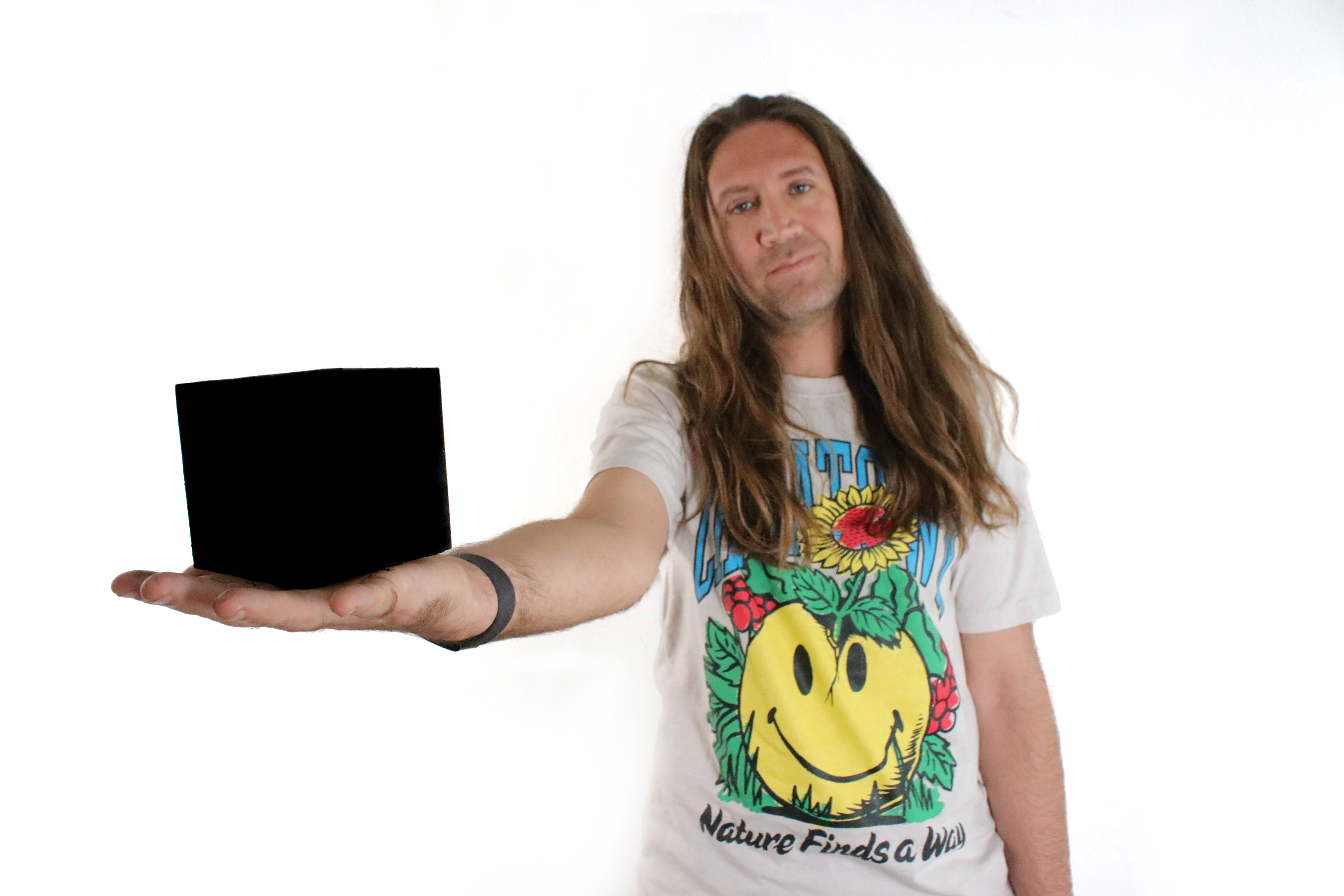
Since 2016, British artist Stuart Semple has been dedicated to providing artists everywhere with the blackest of black paints—all artists, that is, except Anish Kapoor, who ignited a controversy by securing the exclusive rights to the artistic use of Vantablack, a super light-absorbent material made from carbon nanotubes, developed in 2014 by the U.K. firm Surrey NanoSystems.
This month, Semple fired the final shot in what I’ve come to call “the Color Wars,” his (somewhat one-sided) battle against Kapoor and color exclusivity, with the release of Black 4.0, his blackest paint yet.
Just like Vantablack, Black 4.0 absorbs 99.96 percent of visible light, as measured by a spectrometer.
“The stuff is so crazy I can’t believe it’s real. But it absolutely is, and it’s mind-blowingly better than anything Kapoor is playing with,” Semple told Artnet News in an email. “It traps more light than any other paint out there. It works a bit like velvet does in that the surface, at a microscopic level, is disordered so light gets trapped in it. We also use special mattifiers that stop reflection.”
Stuart Semple using Black 4.0, his new super black paint. Photo courtesy of Stuart Semple.
The new paint costs $49.99 for a 150 ml bottle, and is available for purchase on Semple’s website—provided you are not Anish Kapoor.
Semple first went after Kapoor in late 2016, when he began selling a pigment he claimed to be the world’s pinkest pink, followed by the “most glittery glitter.”
To buy either, one merely had to promise they weren’t Kapoor—and wouldn’t allow the product to pass into the artist’s hands. Kapoor got a jar of pinkest pink anyway, and proved it by posting a photo of his middle finger dipped in the powder on Instagram.
Semple fired back with his first Vantablack alternative, the cherry-scented Black 2.0, in March 2017. But he wasn’t content to stop there, launching a Kickstarter to produce his blacker Black 3.0 in bulk in 2019.
More recently, Semple has also targeted Mattel, releasing “Pinkie – The Barbiest Pink” to protest the doll company’s attempt to trademark Barbie’s signature pink. He wasn’t planning to make a new super black, but fate intervened.
A comparison of Stuart Semple’s black paints. Photo courtesy of Stuart Semple.
“I’d love to say it was something really clever but actually, it happened a bit by mistake. We were making a batch of Black 3.0 and put the ingredients together in a different order, and something weird happened. It looked way blacker,” Semple said. “So we learned from that and rebuilt our ‘superbase’ which is the acrylic that holds our ‘black magick pigment’ and we changed the mattifiers we use.”
“It’s very different from Black 2.0 and 3.0,” he added. “It’s not just a new version, it’s a totally new paint!”
Black 4.0, a new superblack paint from Stuart Semple. Photo courtesy of Stuart Semple.
Semple—who promises with this latest product release “to call it a day with the paint-making and get back to my own art”—has already sent samples of Black 4.0 to some 2,500 artists all around the world to help perfect the product, which was developed with the help of an astrophysicist.
“In the end, Black 4.0 is a joy to use, it just feels gorgeous coming off the brush—something that 2.0 had that I lost with 3.0,” he said. “It’s much more robust and durable enough for sculptures and the coverage is a lot better too. You can paint most things with one stroke. It’s still non-toxic, and able to be used with a brush, but it’s just way blacker than anything I’ve ever seen before.”
Installation view of Anish Kapoor’s exhibition at the Palazzo Manfrin, Venice. Photo ©David Levene.
The release of Black 4.0 comes ahead of the U.S. debut of Kapoor’s first VantaBlack paintings and sculptures, which open at New York’s Lisson Gallery on November 2. (The artist first showed the works during the 2022 Venice Biennale at the Gallerie dell’Accademia di Venezia and Palazzo Manfrin.)
Kapoor has long maintained that his exclusive use of Vantablack is justified because he worked with Surrey NanoSystems to help develop artistic applications for the nanotube technology behind the product. But years later, the whole arrangement still doesn’t sit right with Semple.
“I think [Kapoor has] probably long since moved on, and probably doesn’t care. But really I do… still,” he said. “I believe artists should have access to stuff that elevates their art.”
More Trending Stories:
Four ‘Excellently Preserved’ Ancient Roman Swords Have Been Found in the Judean Desert